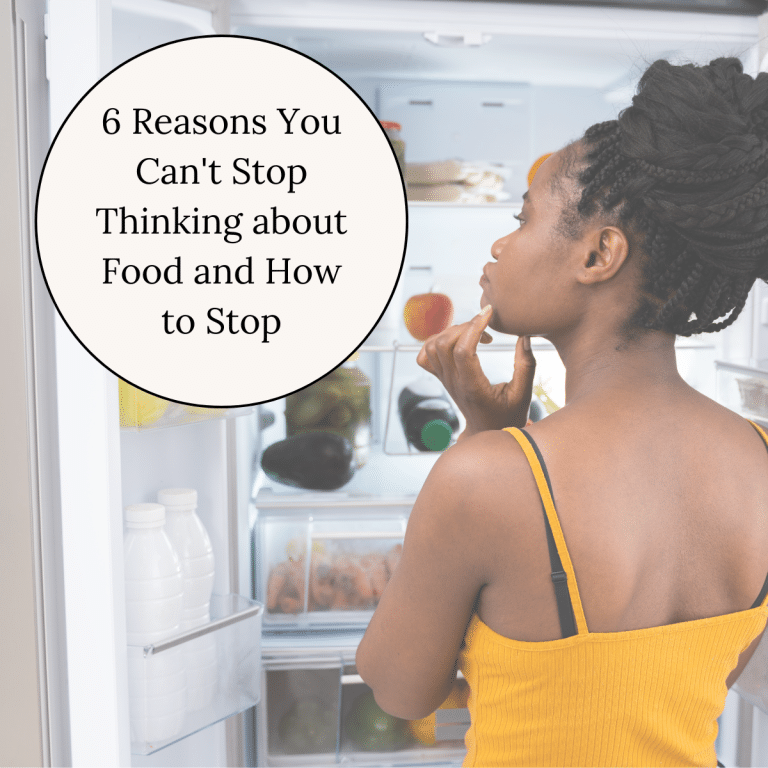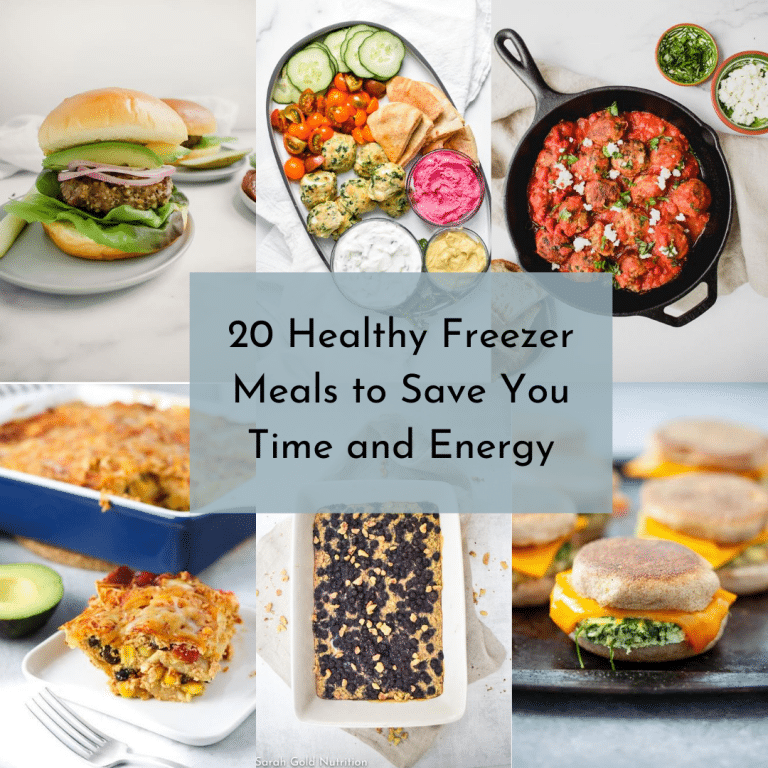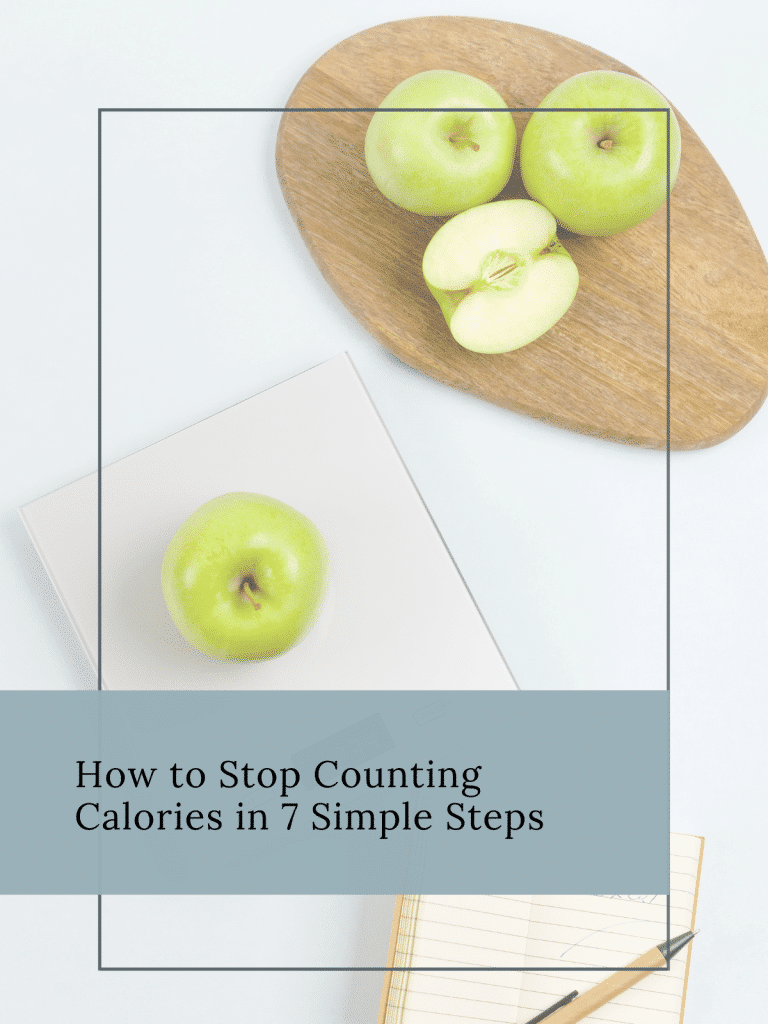Gentle Nutrition: How to Eat Healthy Without Diet Rules
If you’re new to intuitive eating, you may be worried that all you’ll eat if you let go of food rules is pizza and ice cream. This is a totally normal fear, especially if you tend to eat a lot of those foods in between diets.
But eating intuitively does still mean eating lots of nutritious foods. In fact, research shows that intuitive eaters eat more fruits and vegetables than dieters.
Gentle nutrition is the tenth and last principle of intuitive eating. It’s the final piece of the intuitive eating puzzle and is the part of the intuitive eating self-care framework that focuses on nurturing your body while satisfying your taste buds.
Read on to learn more about what gentle nutrition is (and what it’s not), plus tips for getting started with gentle nutrition today.

What is Gentle Nutrition?
Gentle nutrition is nutrition without the diets or the rules. It’s the bridge between understanding your body and food preferences and applying what we know from nutrition science.
It’s all about honoring your health by making food choices that consider both your cravings and what foods make you feel physically well and support long term health, including if you have a chronic disease that may affect what and how you eat.
The core of gentle nutrition is eating enough
The most basic level of nutrition is actually getting adequate calories and making sure your body gets what it needs. Under-eating puts your body into a state of stress, so if you aren’t eating enough, then it really doesn’t matter how healthy what you eat is, or how many “superfoods” you eat.
Gentle nutrition focuses on addition instead of subtraction
The biggest difference between gentle nutrition and diet rules is that gentle nutrition focuses on what you can add to your plate that will make it more nutritious instead of taking things out of your diet.
For example, instead of forbidding you to eat foods containing simple carbohydrates (like white bread or white rice), gentle nutrition focuses on what you can add to make a meal more nourishing.
This may look like eating a vegetable with the meal to increase fiber and balance blood sugars instead of cutting out the simple carbohydrates completely. Or, adding avocado for healthy fats and fiber to support cholesterol and blood sugar management.
Gentle nutrition prioritizes variety over specific foods
Eating a variety of foods is one of the best ways to support overall health. There is no one food that will make or break your health. In fact, the more variety you get, the more nutrients you’re adding to your diet.
It helps you balance your plate and boost your energy
Since a big part of intuitive eating is learning to listen to your body’s signals, low energy throughout the day indicates that your meals may not be balanced (or you may not be eating enough).
Gentle nutrition offers a solution. By learning to balance your plate with protein, fiber, and fat to keep your blood sugars balanced, you’ll support having sustained energy throughout the day.
Balancing your plate with a combination of macronutrients also keeps cravings at bay. While cravings are not necessarily bad (everyone gets cravings!), it can feel frustrating to have them all the time.
Using the principles of nutrition science to minimize them can be helpful in your intuitive eating journey.
Struggling with cravings? Grab our free guide with 5 simple steps to take control of sugar cravings.
It helps you learn what supports your body
As you explore gentle nutrition, pay attention to how your body is feeling. This helps you understand which foods and eating patterns give you energy (or make you feel tired) or which ones help your digestion.
Listening to your body can help you learn which foods support your physical and mental well-being, along with those that may not.
What Gentle Nutrition is Not
There’s a reason that gentle nutrition is the 10th and final principle of intuitive eating. In order to truly embrace the flexibility of gentle nutrition, it’s helpful to have learned to let go of the dieting mentality.

Gentle nutrition is not another set of diet rules
As soon as you start assigning rules to nutrition, you’ve strayed into diet culture territory.
Here’s an example: Protein can help balance blood sugar, reduce cravings, and support sustained energy. So you may make it a priority to include protein at most meals because you know you feel better when you do.
This does not mean you need to eat protein at every meal. Because sometimes all you want is a bowl of pasta or pizza for dinner. That’s OK!
If it becomes a rule that you have to have protein at every meal, and if you don’t, you’ve failed, then you’ve left gentle nutrition and gone back to diet land.
It’s not a way to control your eating
The point of gentle nutrition is not to control your eating but rather to provide a framework for eating to support your mental, emotional, and physical health.
If you’re using gentle nutrition to control your eating, it may be worth pausing and revisiting some of the other principles of intuitive eating before continuing.
7 Ways to Start with Gentle Nutrition
Here are a few simple ways you can get started with gentle nutrition:
- Add a fruit or vegetable to dinner for a boost of fiber, vitamins, and minerals.
- Add a source of protein to breakfast to help you stay full for longer, maintain your energy, and reduce sugar cravings.
- Choose whole grains when you enjoy them for added fiber to help balance your blood sugars.
- Cook with olive oil to support heart health.
- Keep a water bottle with you throughout the day to stay hydrated and promote good digestion.
- Eat something with carbohydrates before an early morning workout to give you the energy to get the most out of your session.
- Snack on trail mix that contains nuts to support blood sugar balance, heart health, brain health, and more.
Remember, these are not hard and fast rules–they’re simply suggestions that consider what we know about how food affects the body. It’s up to you to decide how and when you incorporate them.
Gentle nutrition shouldn’t be stressful or guilt-inducing. Sometimes you either can’t or don’t want to use the options listed above. And that’s okay! Letting go of the idea that you “must” eat a certain way to be healthy is a key part of embracing gentle nutrition.
How to Make Gentle Nutrition Easy for You
If you’re just getting started, incorporating gentle nutrition can feel overwhelming. Here are some tips for success that may make it easier for you:
1. Start slow. Focus on adding foods to support your health one meal or snack at a time.
2. Consider flexible meal planning. This can help reduce the stress associated with not knowing what to cook while allowing for the fact that sometimes life gets in the way, and you may not be able to stick to the plan.
3. Keep your kitchen well-stocked with foods you both enjoy and know how to cook.
4. Remember that one meal won’t make or break your health. Rather, focus on overall patterns and what is happening over the course of an entire day/week/month versus fixating on what happened at a single meal.
5. Don’t let gentle nutrition become another set of food rules. Focus on gentle nutrition as a form of self-care, not self-control.
Final Thoughts
As a registered dietitian, I believe in the power of food to make us feel our best. However, nutrition is only one piece of the puzzle. It’s also important to consider preferences and lifestyle when choosing what to eat, which makes the “best” diet for someone highly individualized.
If you’re ready to increase energy, say goodbye to cravings and out of control eating, and finally build healthy habits that last, start today with our free training “How to Feel in Control Around All Foods without Diets or Willpower” where you’ll learn:
- The 3 biggest reasons you experience low energy, sugar or carb cravings, and can’t stop eating when you’re full.
- Why traditional tips like getting food out of the house, portion control, cutting out carbs and sweets, or counting calories are actually making your cravings worse, causing you to over eat, and making you feel more out of control around foods.
- The exact steps you need to take to go from stressed and out of control around food to confident and free.
- How to apply Gentle Nutrition (along with some basic habit science) to help you improve your health without diets or giving up your favorite foods.







Thanks Sarah for this wonderful blog and tips on gentle nutrition. As a post-menopausal woman who helps women eat intuitively as they manage perimenopause and beyond, eating issues can show up a lot (new or old ones) – especially restrict / binge cycles.
I’m so glad you found it helpful!